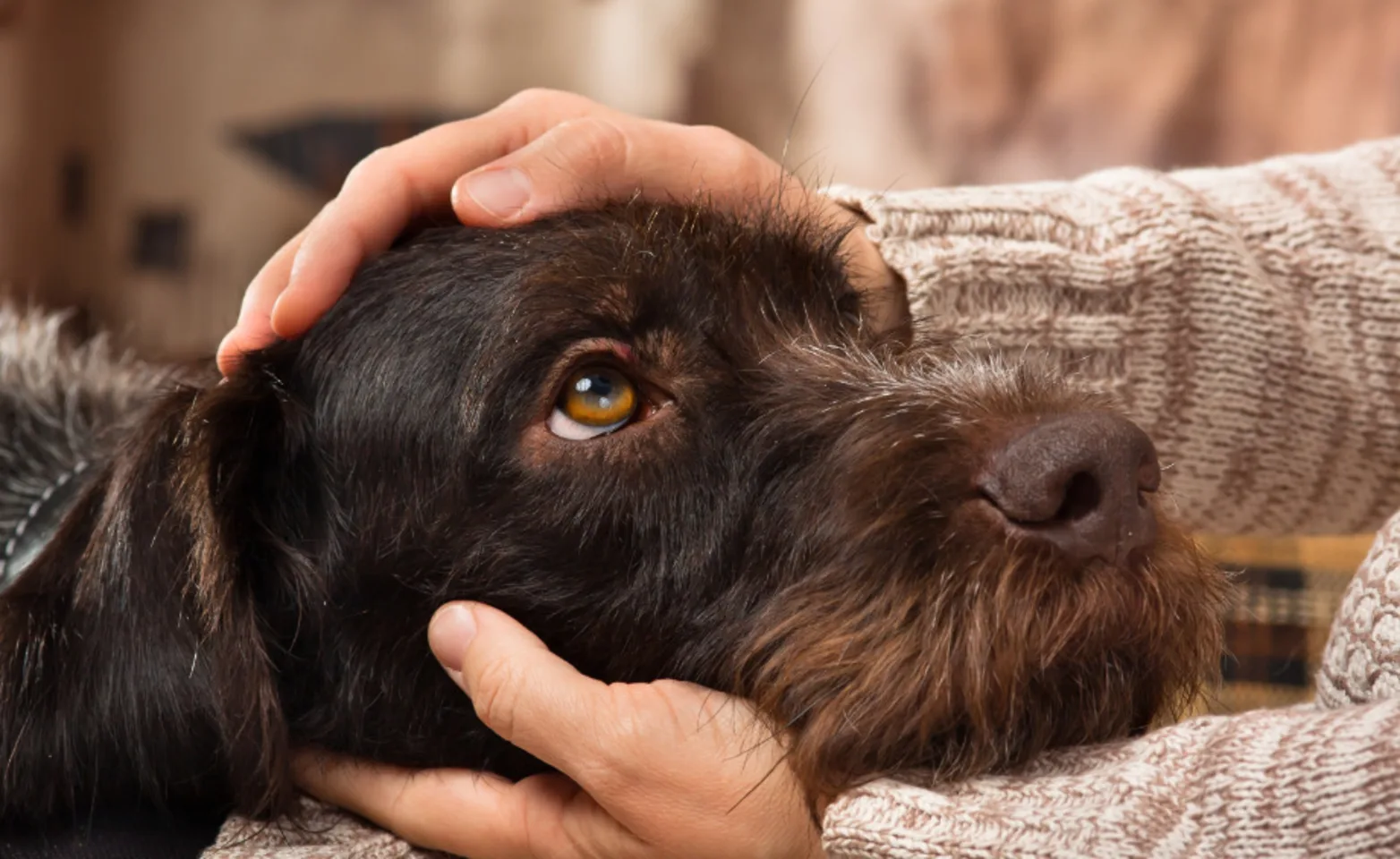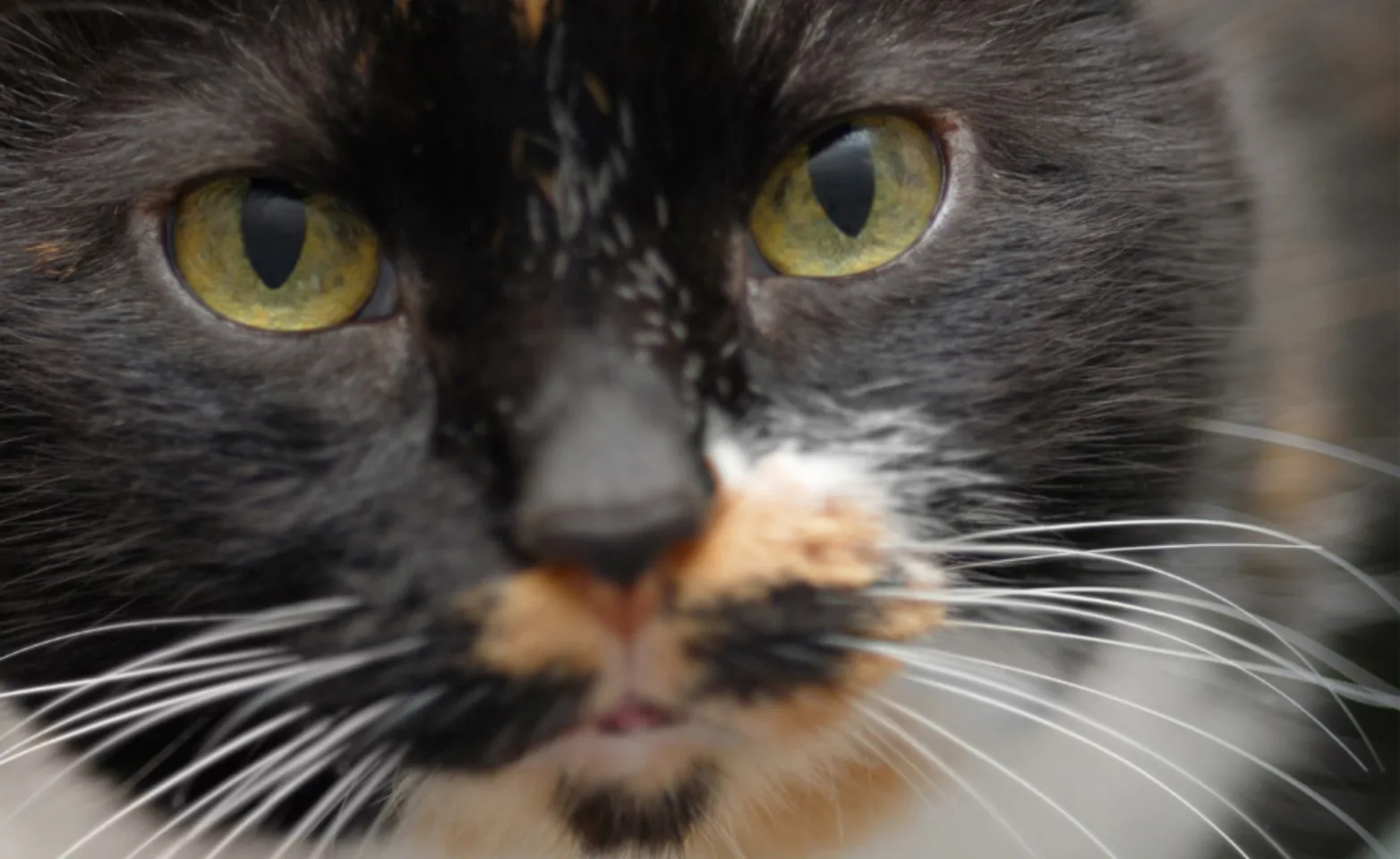Veterinary Vision Animal Eye Specialists

Progressive Retinal Atrophy
Progressive retinal atrophy (PRA) is an inherited condition which causes gradually progressive degeneration of the retina with irreversible blindness. In all breeds in which the type of inheritance has been identified, it is autosomal recessive. This means that each parent must carry an abnormal gene and that two parents who are not affected themselves may produce affected puppies.
The age of onset and rate of progression varies from breed to breed. Usually, the vision becomes affected when the dog is 6-8 years of age. The first sign typically observed by an affected dog’s owner is loss of night vision. Behavioral changes attributable to vision decline progress over several months to years until daylight vision is also noticeably affected and many dogs eventually go blind.
While early stages of PRA may be more difficult to diagnose, most dogs with PRA that are presented for vision loss already have advanced disease and the diagnosis can be made easily at an exam by an experienced veterinary ophthalmologist using indirect ophthalmoscopy. Thinning of the retina with an associated increase in the “shininess” of the reflective tapetum are observed, along with reduced size of the retinal vessels. Examples of advanced retinal degeneration is seen in photographs on this page.
Occasionally, cataracts may occur secondary to late-stage retinal degeneration. In such cases, cataract surgery is obviously of no benefit. However, often a dog may not present for ophthalmic examination until cataracts have progressed so that detailed examination of the retina is prevented by the cloudy lens. In such cases, electroretinography is essential to diagnose the retinal disease and prevent an unnecessary (and unsuccessful) cataract surgery. An electroretinogram measures the electrical response of the retina in response to light stimulation. Even in the presence of a corneal opacity or cataract, sufficient light reaches the retina to result in a response demonstrating whether the retina is functional.

Sudden Acquired Retinal Degeneration
Although most cases of retinal degeneration are inherited, there is a spontaneous (non-inherited) syndrome of rapid onset, bilateral, retinal degeneration called Sudden Acquired Retinal Degeneration Syndrome (SARDS). Affected animals present for sudden blindness and dilated pupils, yet have an otherwise unremarkable eye exam. Retinal degeneration must be proven using a special test called an electroretinogram in these cases.
Other Tests, Treatment, and Outcome
While the diagnosis of retinal degeneration is made by ophthalmoscopy and/or electroretinography, genetic testing for PRA can be useful for breeders to identify not only affected animals, but those that are genetic carriers for the disease. This type of diagnosis is essential to eliminate carriers from the breeding population. For more information on genetic testing, visit Optigen.com.
Unfortunately, there is no proven treatment for any form of retinal degeneration. These conditions are painless and, in most cases, loss of vision progresses slowly and pets adjust to this handicap remarkably well. Animals which are irreversibly blind can live a normal lifespan and have an excellent quality of life provided some extra care by their owners. It is important to recognize that loss of vision does not represent the same handicap for our pets as it would for us. For us, blindness would mean an inability to read or drive a car and a loss of independence. Our pets are already (happily) dependent on us. It is important to keep their environment as safe as possible. A harness may work better than a collar for guiding your pet on walks outdoors — a blind pet should never be allowed to run free. Try not to rearrange the furniture and you will be amazed at how well your pet will remember the floor plan — even going up and down stairs. Swimming pools and balconies present particular hazards and some sort of barrier may be necessary in these situations. A blind pet can continue in every way in their primary role as a loving companion.
Some Dog Breeds Affected by Progressive Retinal Atrophy (PRA)
Breed - Comment
Akita - onset 2-3 yrs
Alaskan Malamute - Hemeralopia; specific cone degeneration
Beagle
Border Collie
Borzoi - 2 types described
Briard - onset 12-18 months
Chesapeake Bay Retriever - 2 types: onset 8-12 months or 4 to 7 yrs
Chow Chow
American Cocker Spaniel
Collie - Rod-cone dysplasia type II, onset 6-8 months; also typical PRA, onset 6-9 yrs
English Cocker Spaniel - onset 1-3 yrs
English Springer Spaniel - onset 3-5 yrs
German Shepherd
Golden Retriever
Irish Setter - Rod-cone dysplasia type I, onset < 6 months
Labrador Retriever - 2 types: PRA and Central PRA (RPE affected)
Lhasa Apso
Miniature Schnauzer - Rod-cone dysplasia, onset 10-12 months
Norwegian Elkhound - Rod dysplasia, blind by 1-2 yrs
Poodle - Rod-cone degeneration, onset 6-9 yrs
Rottweiler
Samoyed
Shar Pei
Shetland Sheepdog
Shih Tzu
Siberian Husky
Tibetan Terrier - onset 8-12 months
